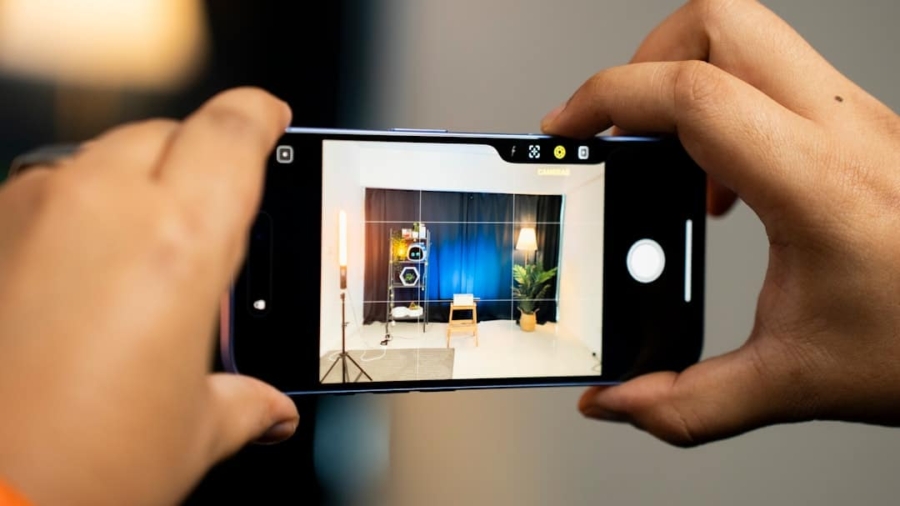5G technology represents the fifth generation of mobile network technology, succeeding its predecessor, 4G LTE. It is designed to provide significantly faster data transfer rates, reduced latency, and the ability to connect a vast number of devices simultaneously. The architecture of 5G is built on a combination of new radio frequencies, advanced antenna technologies, and a more efficient network infrastructure.
This new generation of mobile technology operates on three main frequency bands: low-band, mid-band, and high-band (often referred to as mmWave). Each band offers different advantages; for instance, low-band provides extensive coverage but lower speeds, while mmWave delivers ultra-fast speeds over shorter distances. The implications of 5G extend beyond mere speed enhancements.
It enables a more interconnected world where devices can communicate with each other in real-time. This capability is crucial for the Internet of Things (IoT), where billions of devices—from smart home appliances to industrial sensors—require seamless connectivity. Moreover, 5G’s low latency—often as low as one millisecond—opens the door for applications that demand instantaneous feedback, such as autonomous vehicles and remote surgeries.
As 5G networks continue to roll out globally, they promise to transform various sectors, including healthcare, transportation, and entertainment, by providing the backbone for innovative technologies.
Key Takeaways
- 5G technology offers faster speeds, lower latency, and increased capacity for data transmission.
- 5G has the potential to significantly enhance the capabilities of augmented reality (AR) applications.
- Real-time interactivity and immersion in AR experiences will be greatly improved with 5G technology.
- Enhanced performance and speed of 5G will enable more seamless and immersive AR experiences.
- 5G opens up new opportunities for innovative AR applications and experiences.
The Impact of 5G on Augmented Reality
The advent of 5G technology is poised to revolutionize augmented reality (AR) experiences by enhancing their quality and accessibility. AR overlays digital information onto the real world, creating immersive experiences that can be used in various applications, from gaming to education and training. With the increased bandwidth and reduced latency provided by 5G, AR applications can deliver richer content with higher fidelity graphics and more complex interactions.
This means that users can expect smoother animations, more detailed visuals, and a more engaging overall experience. For instance, consider an AR application used in retail environments. With 5G, customers can use their smartphones or AR glasses to visualize how furniture would look in their homes before making a purchase.
The high-speed data transfer allows for real-time rendering of 3D models in the user’s environment, making the experience not only more interactive but also more convincing. Furthermore, the ability to stream high-definition video content alongside AR elements means that brands can create dynamic marketing campaigns that capture consumer attention in unprecedented ways. As a result, businesses can leverage 5G-enabled AR to enhance customer engagement and drive sales.
Real-Time Interactivity and Immersion

One of the most significant advantages of 5G technology is its ability to facilitate real-time interactivity in augmented reality applications. Traditional AR experiences often suffer from lag or delays due to limited bandwidth and high latency in existing networks. However, with 5G’s ultra-low latency capabilities, users can interact with digital elements in their environment almost instantaneously.
This immediacy transforms how users engage with AR content, making it feel more natural and intuitive. For example, in educational settings, students can use AR applications to explore complex subjects like anatomy or astronomy interactively. Imagine a biology class where students can manipulate a 3D model of the human heart in real-time, rotating it and zooming in on specific parts while receiving instant feedback from the application.
This level of interactivity not only enhances learning but also fosters deeper engagement with the material. The immersive nature of such experiences encourages exploration and curiosity, leading to a more effective educational process.
Enhanced Performance and Speed
The performance enhancements brought about by 5G technology are particularly beneficial for augmented reality applications that require high levels of graphical fidelity and processing power. With 4G networks, users often experienced limitations in terms of data transfer speeds and processing capabilities, which could hinder the quality of AR experiences. In contrast, 5G networks can support data rates exceeding 10 Gbps under optimal conditions, allowing for the transmission of high-resolution graphics and complex data sets without noticeable delays.
This enhanced performance is crucial for industries such as gaming and entertainment, where user experience is paramount. For instance, multiplayer AR games that rely on real-time interactions among players can benefit immensely from 5G’s capabilities. Players can engage in shared experiences without the frustration of lag or disconnection issues that were common with previous generations of mobile networks.
Additionally, the ability to stream high-quality graphics directly to AR devices means that developers can create more visually stunning environments that captivate users and keep them engaged for longer periods.
Opportunities for New AR Applications
The integration of 5G technology into augmented reality opens up a plethora of opportunities for new applications across various sectors. Industries such as healthcare, manufacturing, and tourism stand to gain significantly from the enhanced capabilities offered by 5G-enabled AR solutions. In healthcare, for example, surgeons can utilize AR overlays during procedures to visualize critical information such as patient anatomy or surgical pathways in real-time.
This capability not only improves precision but also enhances patient safety. In manufacturing settings, workers can use AR glasses connected to a 5G network to receive real-time instructions and visual aids while assembling complex machinery.
Similarly, in tourism, travelers can use AR applications to enhance their experiences at historical sites or museums by accessing interactive content that provides context and depth to their visits. The potential for innovation is vast, as businesses explore how to leverage 5G-enabled AR to create unique value propositions for their customers.
Overcoming Previous Limitations

Historically, augmented reality has faced several limitations that have hindered its widespread adoption. Issues such as limited processing power on mobile devices, inadequate bandwidth for streaming high-quality content, and latency problems have all contributed to a less-than-optimal user experience. However, with the rollout of 5G technology, many of these barriers are being dismantled.
The increased bandwidth allows for more data-intensive applications to run smoothly on mobile devices without compromising performance. Moreover, the ability to connect a larger number of devices simultaneously means that AR applications can be deployed in crowded environments without degradation in service quality. For instance, at large events like concerts or sports games, attendees can use AR apps to access exclusive content or interact with other fans in real-time without experiencing connectivity issues.
This shift not only enhances individual user experiences but also paves the way for collective interactions that were previously unfeasible due to network constraints.
The Role of Edge Computing in 5G AR
Edge computing plays a pivotal role in maximizing the potential of 5G technology for augmented reality applications. By processing data closer to the source—at the “edge” of the network—edge computing reduces latency and improves response times significantly. This is particularly important for AR applications that require real-time data processing and interaction.
Instead of sending data back and forth between a central server and a user’s device, edge computing allows for local processing of information, enabling faster decision-making and interaction. For example, in an industrial setting where workers are using AR glasses to receive instructions while performing tasks, edge computing can analyze sensor data from machinery on-site and provide immediate feedback or alerts directly through the AR interface. This capability not only enhances safety but also increases operational efficiency by minimizing downtime caused by delays in data processing.
As edge computing continues to evolve alongside 5G technology, it will further empower developers to create innovative AR solutions that leverage real-time data analytics.
Future Implications and Possibilities
The future implications of combining 5G technology with augmented reality are vast and multifaceted. As both technologies continue to mature, we can expect an explosion of creativity and innovation across various industries. The potential for immersive experiences will likely lead to new business models and revenue streams as companies explore how best to integrate AR into their offerings.
For instance, virtual tourism could become a reality where users can explore distant locations through immersive AR experiences without leaving their homes. Moreover, as 5G networks become more ubiquitous globally, access to advanced AR applications will expand beyond urban centers into rural areas where connectivity has traditionally been limited. This democratization of technology could lead to significant advancements in education and healthcare delivery in underserved regions.
As developers harness the power of 5G-enabled AR solutions, we may witness transformative changes in how we interact with our environment—blurring the lines between physical and digital realities in ways we have yet to fully imagine. In conclusion, the intersection of 5G technology and augmented reality presents an exciting frontier filled with opportunities for innovation across various sectors. As we continue to explore this dynamic landscape, it is clear that the potential for enhanced interactivity, performance improvements, and new applications will shape our future experiences in profound ways.
For a deeper understanding of the broader technological landscape, you might find the article on technology news and reviews at Enicomp to be particularly relevant. This resource provides valuable insights into the latest trends and innovations that complement the discussion on 5G and augmented reality.
FAQs
What is 5G technology?
5G technology is the fifth generation of mobile network technology, offering faster speeds, lower latency, and increased capacity compared to previous generations.
What are real-time augmented reality applications?
Real-time augmented reality applications are digital experiences that overlay virtual content onto the real world in real time, enhancing the user’s perception of their environment.
How does 5G enable real-time augmented reality applications?
5G enables real-time augmented reality applications by providing the high-speed, low-latency connectivity necessary to deliver seamless and responsive AR experiences.
What are the benefits of using 5G for real-time augmented reality applications?
Using 5G for real-time augmented reality applications allows for smoother, more immersive experiences with minimal lag, as well as the ability to handle large amounts of data for complex AR content.
What are some examples of real-time augmented reality applications enabled by 5G?
Examples of real-time augmented reality applications enabled by 5G include interactive gaming, immersive shopping experiences, remote assistance and collaboration, and enhanced navigation and wayfinding tools.

